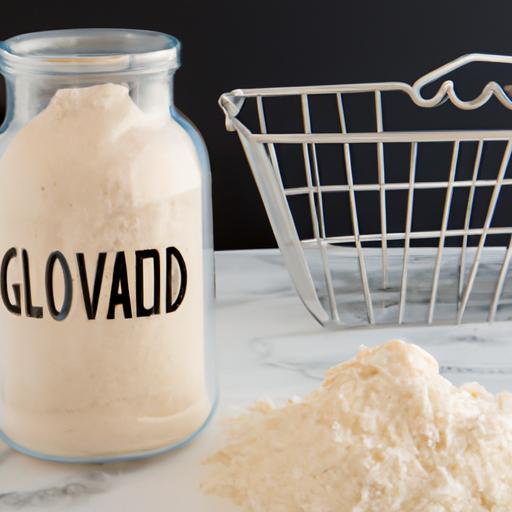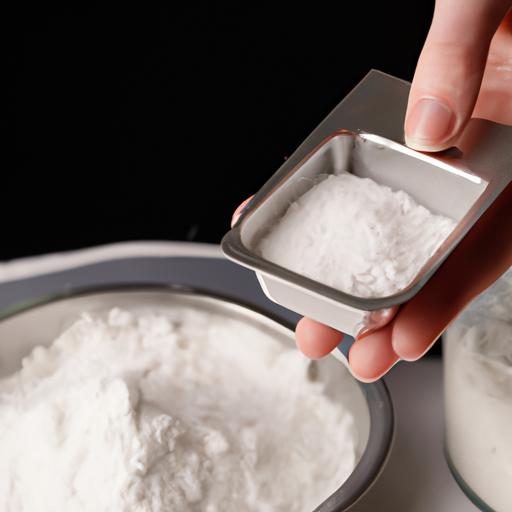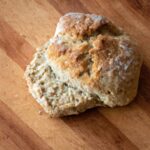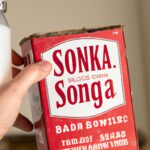As more and more people discover their gluten intolerance or celiac disease, the demand for gluten-free products has increased. Gluten-free baking has become a popular trend, with numerous alternatives available in the market. However, it’s essential to understand what ingredients are gluten-free to avoid any adverse reactions.
In this article, I will answer the question, “Does baking soda have gluten?” and provide an ultimate guide for gluten-free bakers. We will explore the role of baking soda in baking, the dangers of gluten, and gluten-free baking tips. By the end of this article, you will have a better understanding of gluten-free baking and how to use baking soda to create delicious gluten-free baked goods.
Let’s get started!
What is Baking Soda?

Definition
Baking soda, also known as sodium bicarbonate, is a white crystalline powder commonly used in baking. It is an essential ingredient in many recipes because it acts as a leavening agent, helping the dough or batter rise.
Role in Baking
When baking soda is combined with acidic ingredients, such as buttermilk, vinegar, or citrus juice, it produces carbon dioxide gas. This gas creates bubbles in the batter or dough, which causes it to expand and rise. This process is known as chemical leavening, which is an alternative to yeast-based leavening.
Baking soda is often used in recipes for cakes, cookies, muffins, and other baked goods that require a fluffy and light texture. It is also used in some savory dishes, such as fried chicken, to create a crispy coating.
Types of Baking Soda
There are two types of baking soda available in the market: natural and synthetic. Natural baking soda is made from trona ore, a mineral that is mined in several locations worldwide. Synthetic baking soda is chemically produced using sodium carbonate and carbon dioxide. Both types of baking soda work the same way in baking and are considered safe for consumption.
What is Gluten?

Overview and Sources
Gluten is a protein found in wheat, barley, and rye. It’s what gives bread its elasticity and chewy texture. Gluten is also present in many other food products, including pasta, pizza, and beer.
Why is Gluten Harmful?
For people with gluten intolerance or celiac disease, gluten can be extremely harmful. When people with celiac disease consume gluten, their immune system attacks the small intestine, damaging the lining and preventing the absorption of nutrients. This can lead to malnutrition, anemia, and other health problems.
Symptoms of Gluten Intolerance or Celiac Disease
Symptoms of gluten intolerance or celiac disease can vary but may include bloating, stomach pain, diarrhea, constipation, fatigue, and skin rashes. It’s important to note that some people may not experience any symptoms, making it difficult to diagnose gluten intolerance or celiac disease.
If you suspect you have gluten intolerance or celiac disease, it’s essential to consult a doctor for proper diagnosis and treatment. Additionally, avoiding gluten-containing products and using gluten-free alternatives is necessary to maintain a healthy diet.
Does Baking Soda Have Gluten?
If you’re a gluten-free baker, you might wonder if baking soda contains gluten. The good news is that baking soda is considered a gluten-free ingredient.
Baking Soda is Gluten-Free
Baking soda is a simple chemical compound made up of sodium, hydrogen, carbon, and oxygen. It does not contain any gluten or gluten-derived ingredients. Therefore, it’s safe to use in gluten-free baking.
Check Baking Soda Labels
Although baking soda is gluten-free, it’s essential to check the labels of baking soda products to ensure they are gluten-free certified. Some manufacturers may process their baking soda on shared equipment with gluten-containing ingredients, which can cause cross-contamination. Therefore, it’s crucial to look for products with a “gluten-free” certification label to avoid any risk.
In conclusion, baking soda is a gluten-free ingredient, making it a safe and reliable option for gluten-free baking. However, always check the labels of baking soda products to ensure they are gluten-free certified to avoid any cross-contamination.
Gluten-free baking tips:
Gluten-free baking can be challenging, but with the right techniques, you can create delicious gluten-free baked goods. Here are some tips for gluten-free baking:
5.1 Use alternative flours and binders
When baking gluten-free, it’s essential to use alternative flours and binders to replace wheat flour’s gluten. Some popular gluten-free flours include almond flour, coconut flour, and rice flour. Binders like xanthan gum and guar gum can help create a similar texture to gluten.
5.2 Adjust the baking time and temperature
Gluten-free baked goods tend to brown faster than those made with wheat flour, so it’s essential to adjust the baking time and temperature accordingly. You may need to reduce the temperature by 25°F and increase the baking time.
5.3 Measure ingredients accurately
Accurately measuring ingredients is crucial in gluten-free baking. Use a kitchen scale to weigh the ingredients, as gluten-free flours have a different weight than wheat flour. It’s also essential to sift the flour to remove any lumps and ensure even mixing.
5.4 Common gluten-free baking mistakes and how to avoid them
Some common gluten-free baking mistakes include using too much or too little liquid, overmixing the batter, and not letting the batter rest before baking. To avoid these mistakes, follow the recipe instructions carefully, and take your time to mix the batter well. Letting the batter rest for a few minutes can also help improve the texture.
By following these tips, you can create delicious gluten-free baked goods that are just as tasty as those made with wheat flour. Happy baking!
Conclusion:
In conclusion, baking soda is a gluten-free ingredient commonly used in baking. It is essential to check the labels of baking soda products to ensure they are gluten-free certified. Gluten-free baking can be challenging, but with the right ingredients and techniques, it is possible to create delicious baked goods.
Using alternative flours and binders, adjusting the baking time and temperature, and measuring ingredients accurately can all help in creating successful gluten-free baked goods.
Remember, if you have gluten intolerance or celiac disease, it’s crucial to avoid gluten-containing ingredients and use gluten-free alternatives.
I hope this article has been informative and helpful in answering the question, “Does baking soda have gluten?” Happy gluten-free baking!



